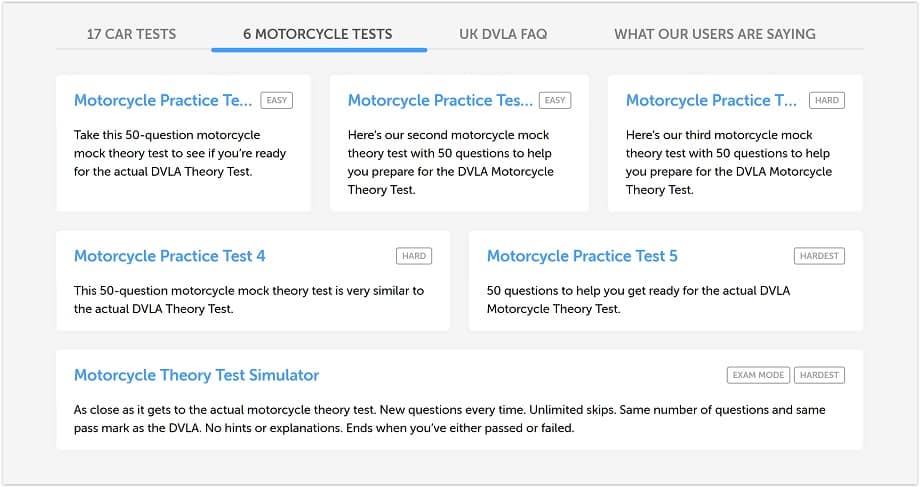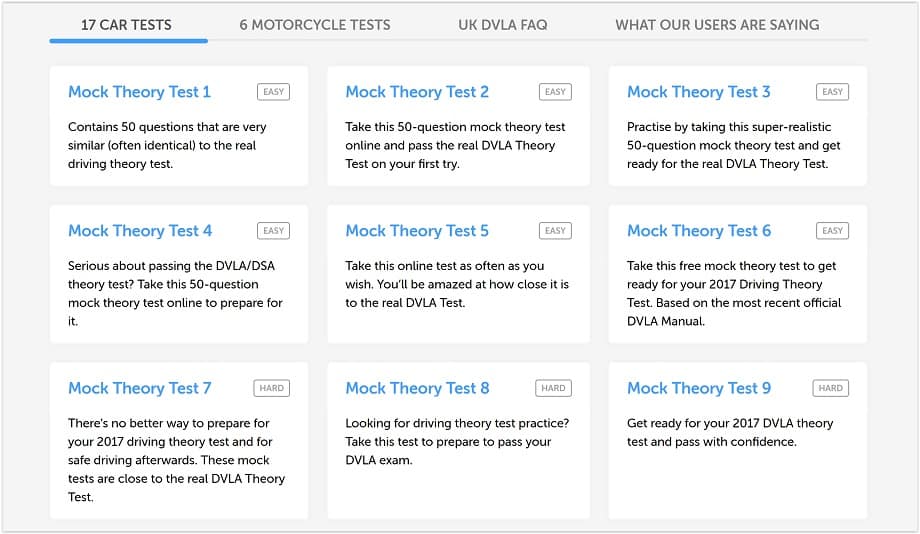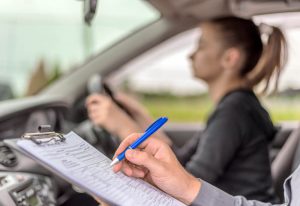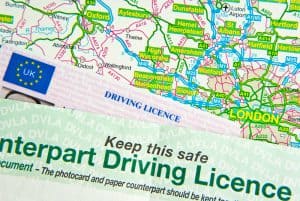These Are All Key Differences between Theory Tests for Motorbikes and Cars
More help for you
The nuts and bolts of theory tests when you’re learning to ride a motorbike or drive a car are the same.
Both examinations have the same number of multiple-choice questions and hazard perception test clips.
However, the content of each theory test is entirely different. And here’s the important thing to remember: if you already know how to drive a car, you’re going to need to sit a second theory test in order to be qualified to use a motorbike.
Here’s a look at some of the main differences between the examinations you’ll sit.
The Age You Can Take Your Theory Test
You have to wait until you’re 17 before you can sit your theory test for driving a car or riding a motorcycle. However, you can take the exam when you’re 16 if you’re learning how to ride a moped which is 50cc or less.
Recommended Reading Material
Two of the books which are recommended points of reference both before and after you’ve taken your theory test are the same for people using cars and motorcycles: they’re called The Official Highway Code, and Know Your Road Signs.
However, car users are urged to take a look at The Official DVSA Guide To Driving -- The Essential Skills. This covers all the areas which are likely to crop up during your exam, and include vehicle-specific points such as maintenance, security, economical driving, and the latest information on smart motorways and how it affects you.
Meanwhile, The Official DVSA Guide to Riding offers details on advanced techniques, what to do if you’re a disabled rider, tips when you’re using your motorcycle abroad, and specific advice on what you should do in an emergency or in the event of a breakdown.
For car drivers, there is one practical test which usually entails 40 minutes of driving time with an examiner. However, motorcyclists have a few extra hoops to jump through. This is because they need to complete the module one off-road riding test, followed by the module two on-road driving test.
The module one test takes about 20 minutes all in all. Some of the manoeuvres you’ll be expected to accomplish include riding a figure of eight, a U-turn, and making an emergency stop while travelling at a speed of at least 31mph. Here are some tips to pass this module successfully:
The module two test is slightly longer, and can be completed in approximately 40 minutes. This section bears greater similarity to the practical examination for cars -- as there’s a “show me, tell me” section and an eyesight test. Here is a short description of module 2 provided by DVSA:
Motorcycles
Here are 3 Questions you’ll only get asked on a motorcycle theory test.
- 1
What Does the Law Say about Carrying Luggage on a Motorcycle?
The answer to this question is that all luggage must be securely fastened, as it can become hazardous to other road users in the event it becomes dislodged. This is a strong example of why car and motorcycle users require different theory tests, as each mode of transport poses different challenges.
- 2
Why Is It Important to Check Your Motorbike before You Begin a Long Journey on a Motorway?
Making sure that your motorcycle is in good condition is crucial because covering many miles at high speed dramatically increases the likelihood of a breakdown. Again, this isn’t an issue for car users, as their engines are generally more powerful.
- 3
What Should You Always Do When Leaving Your Motorcycle Parked?
The answer here is to always apply a steering lock. One major difference between motorcycles and cars is that you’re going to need to make more of a concerted effort to keep your bike secure, as it’s compact and could be more easily susceptible to theft.

Practice more using our free motorcycle tests with no registration (toptests.co.uk)
Cars
Here are 3 questions you’ll only get asked on a car theory test
- 1
When Are Anti-lock Brakes Activated?
In the case of cars, this is when full pressure is applied to the brake pedal -- and the purpose of this is to prevent wheels from locking up, and steering control being lost. Unfortunately, stopping a motorcycle is more complicated, not least because the vast majority of models have separate brake controls which cover the wheels at the front and the back.
- 2
You Are Travelling with an Adult Passenger and Two Eight-year-old Children. Who Is Responsible for Ensuring the Kids Wear Seatbelts?
The driver is always legally responsible for ensuring children are buckled up before a journey begins. Safety matters concerning passengers are always going to be a greater focus in car theory tests.
- 3
What Is the Main Advantage of a Car with Four-wheel Drive?
The answer here is it provides additional grip on road surfaces -- but this is another example of a question which has no relevance to motorcyclists.

Practice more using 17 free car tests with no registration (toptests.co.uk)
Making sure that you target your revision specifically to the type of vehicle you are learning to drive or ride is essential, and that’s why TopTests.co.uk offers specific theory tests for both cars and motorcycles.



